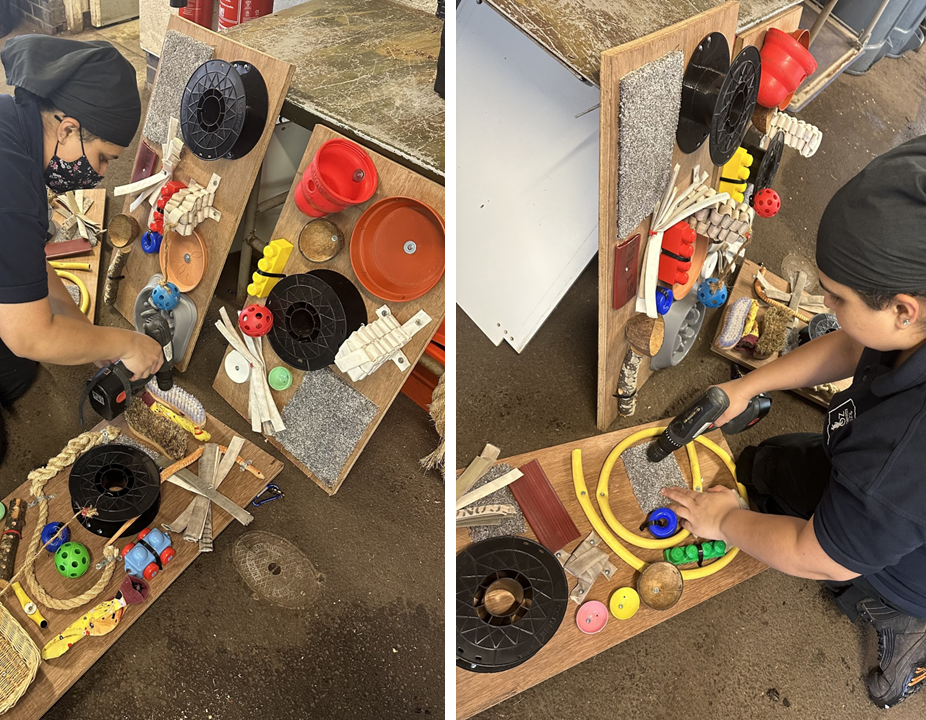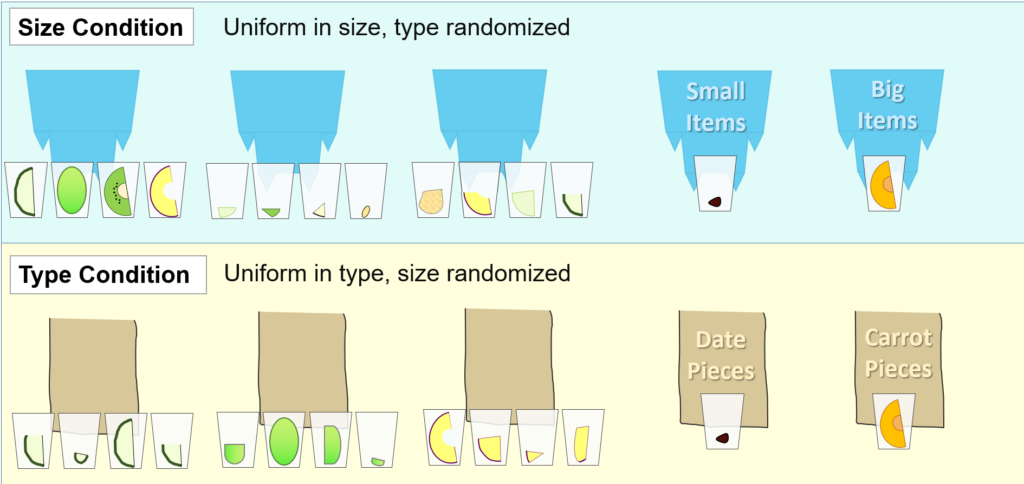Hello, my name is Nailah and I am an Experienced Animal Keeper on the Budongo/Living Links section at RZSS Edinburgh Zoo. As a keeper looking after the research monkeys at Living Links, part of our role is helping to enhance animal welfare by proving stimulating and exciting enrichment for the monkey groups. Usually this is food-based enrichment hidden in objects, often challenging for the monkeys to extract so that they have to use their minds to get the food out! However, other types of enrichment can be made for the monkeys that is not focused on food- I have been working on designing and creating a new enrichment for the Living Links squirrel monkeys called a Busy Board!

For some time now, busy boards have been designed and implemented with human toddlers in mind. The idea behind a busy board is for children to be exposed to a host of different textures, noises, colours and unusual items all part of one item to play with. Even though they were initially intended for children, the advantages mentioned below are also beneficial to non-human primates. I wanted to recreate an interactive activity board that I had previously made for other species of primates for the monkeys at Living Links. I attached various items on this board that food can be hidden in for the monkeys, such as square knots made out of old firehose, pieces of hose pipe, brush heads and even old socks!

So what are the benefits of a busy board?
- It may facilitate the development of brain neurons. Sensory play aids in the physical growth of the brain and strengthens the pathways between neurons in the brain
- Sensory play is closely linked to cognitive development, problem-solving abilities, and fine and gross motor skills
- Sensory play enhances an individual’s memory through practice. By interacting with different textures, tastes, and smells, primates use their senses to strengthen and build their cognitive and motor memories
- Every time a primate touches an object that is cold, sticky, wet, or has different textures, they are expanding on their prior knowledge of these properties.
- Through sensory play, primates can associate new objects to similar ones they have already encountered by using their brain’s ability to recognise characteristics in objects and sensations. We have had researchers test this in our monkeys in past research projects!




















